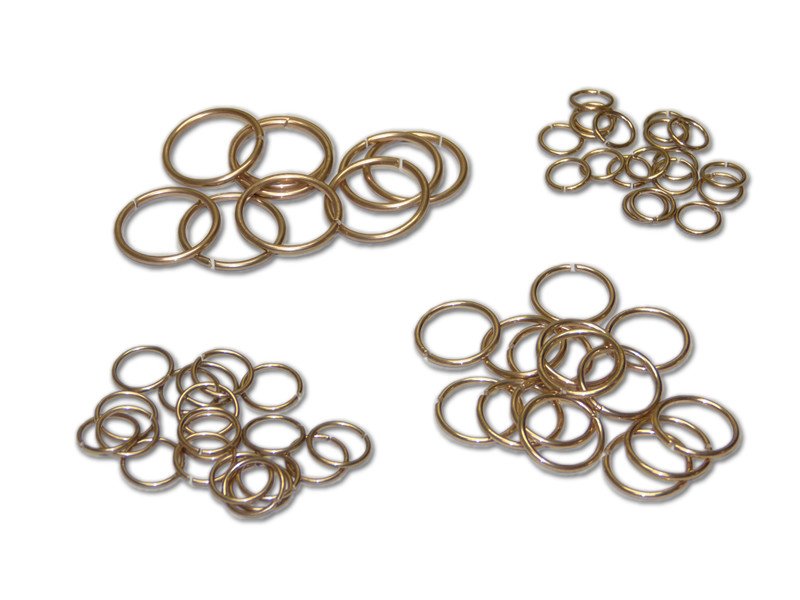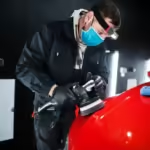In the world of fabrication and metalworking, “brazering” is a term that frequently appears, but many people are still unfamiliar with its specific meaning and applications. Whether you are a DIY enthusiast, a professional welder, or someone interested in metalworking techniques, understanding brazering can significantly enhance the quality and efficiency of your projects.
In this comprehensive guide, we’ll explore what brazering is, its benefits, and the tools required for successful brazering. We’ll also compare it with other metal joining techniques to help you decide when and why to use brazering in various scenarios. With the latest industry trends, this article provides valuable insights to keep you ahead of the curve.
What Is Brazering?
Brazering is a metal joining technique that involves the use of a filler metal to bond two or more base metals. Unlike welding, where the base metals themselves are melted, brazering occurs at a lower temperature, typically above 450°C (about 840°F). The filler metal, which has a lower melting point than the base materials, flows into the joint via capillary action and solidifies, creating a strong, durable bond.
This process is particularly beneficial for joining dissimilar metals or metals with different melting points. The versatility of brazerin’g makes it a popular technique in many industries, from automotive to aerospace, plumbing, and even electronics.
The Brazering Process: Step-by-Step
Brazering, although straightforward, requires attention to detail. Here’s an outline of the general steps involved:
- Preparation of Materials: Clean the base metals to ensure that they are free from contaminants like oil, grease, rust, or oxide layers. This step is crucial to achieving a strong bond.
- Fit-up and Alignment: Position the parts to be joined and ensure they are aligned properly. The gap between the pieces should be as uniform as possible, typically between 0.05 mm and 0.2 mm.
- Flux Application: Apply flux to the joint areas. Flux helps remove oxides from the surfaces of the base metals and promotes the flow of the filler material. It also prevents oxidation during the heating process.
- Heating: Using a torch or another heating method, heat the joint to the required temperature. The heat should be applied evenly to ensure the filler metal melts and flows into the joint properly.
- Filler Metal Introduction: Once the joint reaches the right temperature, introduce the filler metal. The filler should melt and flow into the gap between the base metals. It’s crucial to avoid overheating, as this can damage the metals or the flux.
- Cooling and Cleaning: Allow the joint to cool naturally. Afterward, remove any flux residue, which can be corrosive, to prevent future damage to the bond.
Benefits of Brazering
Brazering has numerous advantages that make it an ideal choice in many fabrication applications. Here are some of the key benefits:
- Lower Temperature: Since brazerin’g occurs at lower temperatures than welding, it is less likely to distort or damage sensitive materials.
- Dissimilar Metals: Brazering can easily join dissimilar metals, which might not be possible through welding or other techniques due to differing melting points.
- Strong and Durable Bonds: When performed correctly, brazerin’g creates strong and durable joints that can withstand pressure, vibration, and thermal cycling.
- Cost-Effective: Brazering typically requires less energy than welding, and the materials involved are often less expensive. This makes it a cost-effective option for many applications.
- Minimal Surface Preparation: Unlike welding, which often requires extensive surface preparation, brazerin’g can work with rougher surfaces and more complex geometries.
- Versatility: Brazering is suitable for various industries and applications, including electronics, plumbing, automotive, aerospace, and even jewelry making.
Types of Brazering
There are several methods of brazering, each with specific advantages depending on the application. The primary brazerin’g methods include:
- Torch Brazering: This is the most common and versatile method, where a torch is used to heat the joint area. It’s ideal for smaller or more precise applications.
- Furnace Brazering: For larger volumes or more uniform heating, a furnace brazering method can be used. This method allows for more controlled heating and is often used in mass production.
- Induction Brazering: In this method, an induction coil is used to heat the metal. It provides rapid, localized heating, making it suitable for high-precision applications.
- Dip Brazering: This involves immersing the parts in a molten bath of filler metal. It’s a quick and efficient process often used in large-scale manufacturing.
Brazering vs. Welding: Key Differences
Although brazering and welding are both used for joining metals, they differ significantly in technique, applications, and results. Below is a comparison chart to highlight the key differences:
| Feature | Brazering | Welding |
| Temperature | Lower temperature (above 450°C) | Higher temperature (typically above 1,000°C) |
| Filler Metal | Uses a filler metal that melts at a lower temperature than the base metals | The base metals melt to form the bond |
| Metals Joined | Ideal for dissimilar metals and alloys | Best for similar metals with comparable melting points |
| Distortion | Minimal distortion due to lower heat levels | Greater distortion risk due to high heat |
| Strength of Joint | Strong and durable but generally not as strong as welded joints | Typically stronger joints, especially for thicker materials |
| Application | Ideal for thin-walled components and delicate work | Best for thicker metals and heavy-duty applications |
| Skill Level | Requires less skill than welding | Requires advanced skill and technique |
| Cost | Lower cost, especially for small-scale applications | Higher cost due to energy and material consumption |
Choosing Brazering Over Welding: When to Use Each
There are certain situations where brazerin’g is clearly the superior choice, as well as times when welding may be preferred. Here are a few guidelines for when to choose brazering over welding:
- For Thin Materials: Brazering is excellent for joining thin materials, as it generates less heat and prevents warping.
- When Working with Dissimilar Metals: Brazering allows for easy joining of dissimilar metals, such as copper to steel or aluminum to stainless steel, making it ideal for applications where welding might not be feasible.
- For Precision and Small Parts: Brazering is ideal for small, intricate components like electronic parts, jewelry, and heat exchangers.
- Low-Heat Applications: If you need to avoid heat distortion or damage to heat-sensitive materials, brazerin’g is the best choice.
On the other hand, welding is typically preferred when:
- Thick Materials Are Involved: For thicker sections of metal, welding provides a stronger and more durable joint.
- Structural Integrity Is Critical: In heavy-duty applications like construction or large machinery, welding is often the stronger option.
- High-Temperature End Use: Welding produces joints that can withstand higher temperatures and more extreme environments.
Tools and Equipment for Brazering
To successfully perform brazerin’g, a few essential tools and equipment are necessary. These include:
- Brazering Torch: This is the most common tool used for heating metals. It can be fueled by either gas or electricity.
- Flux: A chemical compound used to clean the metal surfaces and promote proper bonding between the base metals and filler.
- Filler Metal: This is the material that will join the base metals. It is typically made of alloys such as brass, silver, or copper.
- Heat Source: Apart from a torch, other heat sources can include electric furnaces or induction heaters, depending on the scale of the operation.
- Protective Gear: As with any metalworking task, proper safety gear, such as gloves, goggles, and fire-resistant clothing, is essential.
- Cleaning Supplies: After brazerin’g, it’s important to clean the surfaces of any residual flux to avoid corrosion.
Brazering Applications in Different Industries
Brazering is used in a variety of industries, each benefiting from its unique advantages. Here’s a breakdown of how brazering is applied in different fields:
- Automotive Industry: Brazering is commonly used to join components like radiators, air conditioning systems, and exhaust systems, where high strength is necessary, but heat-sensitive materials must be preserved.
- Aerospace: In the aerospace industry, brazerin’g is used to create lightweight, durable joints for aircraft components. This is particularly important when joining dissimilar materials like aluminum and titanium.
- Electronics: For making precise connections in circuit boards, semiconductors, and other electronic devices, brazerin’g is favored due to its ability to create strong, low-temperature joints.
- Plumbing: Brazering is often used in plumbing for joining copper pipes. It ensures leak-proof joints and allows for smooth connections without damaging the pipes.
- Jewelry Making: Gold, silver, and other precious metals are often brazed together to form intricate designs.
Conclusion
Brazering is an invaluable skill and technique for anyone involved in metalworking or fabrication. With its ability to join dissimilar metals, create strong bonds, and minimize material distortion, it is a versatile method used across numerous industries. Understanding when and how to use brazering—whether as an alternative to welding or as a precise solution for delicate materials—can enhance the quality of your projects and make your work more efficient.
By keeping these guidelines and best practices in mind, you can confidently incorporate brazering into your toolbox and leverage its numerous benefits to produce professional, high-quality results.











